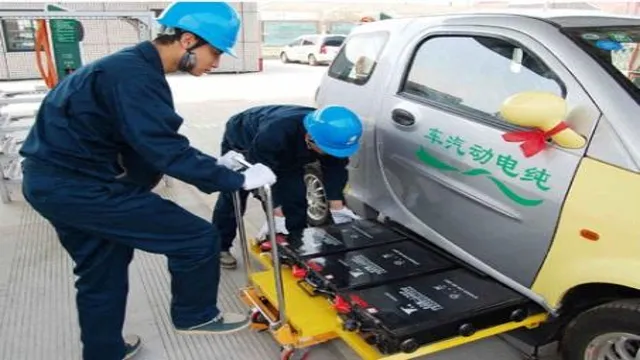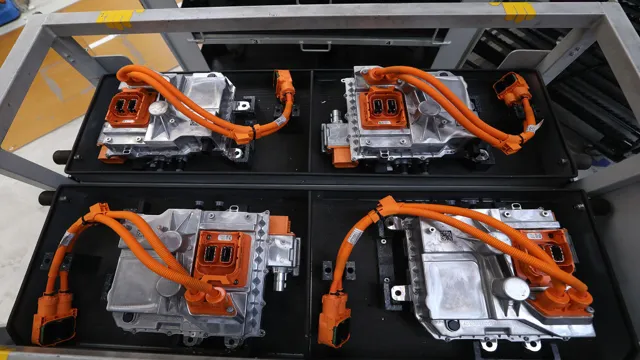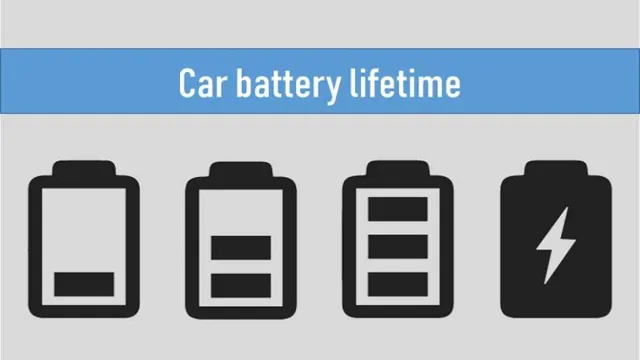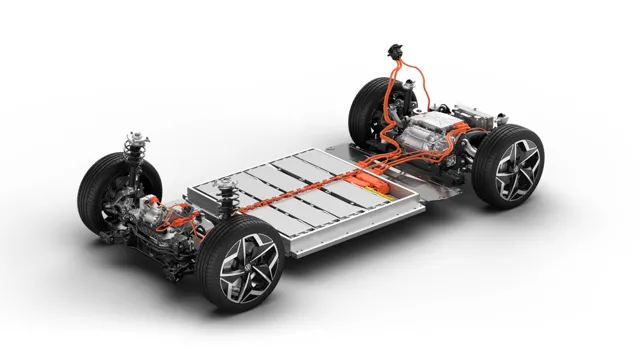Revolutionizing the Road: The Future of Electric Cars with Battery Swap Technology
As electric cars gain popularity, one of the major concerns for drivers is battery life and charging time. While charging stations are becoming more widespread, the process can still take up to several hours. This is where battery swap technology comes in.
Imagine being able to swap out your depleted battery for a fully charged one in the same amount of time it takes to fill up your gas tank. This technology has been around for a while, but it hasn’t taken off as quickly as some had hoped. However, the buzz around battery swap stations is starting to pick up again, with companies like Tesla considering it as a viable solution.
So, how does battery swap technology work, and what are its potential benefits for electric car owners? Let’s explore this innovative solution together.
The Benefits of Battery Swap Technology
Battery swap technology is a game-changer for electric cars. This technology allows electric car owners to swap out their depleted batteries for fully charged ones, eliminating the need for long charging times. Battery swap stations are set up like gas stations, making it easy for car owners to stop and quickly swap their battery.
The benefits of this technology are numerous. For instance, it significantly reduces the time required to charge an electric car, making it more convenient for car owners with busy schedules. It also expands the range of electric cars, as drivers can swap their batteries at stations located throughout the country.
Finally, battery swap technology is more sustainable than traditional charging methods, as the batteries can be reused multiple times, thereby reducing waste. With the increasing popularity of electric cars, battery swap technology offers a solution to one of the primary problems plaguing the industry, making electric cars even more attractive to consumers looking to make the switch to more sustainable modes of transportation.
Faster Recharge Time
One of the significant benefits of battery swap technology is the faster recharge time. Battery swapping allows electric vehicles to replace their drained batteries with fully charged ones, eliminating the need to wait for the battery to charge fully, which can take hours. This technology enables drivers to swap batteries on the go, making it a more convenient way to recharge electric vehicles.
With battery swap stations installed in strategic locations, drivers can quickly change their batteries and continue with their journey without interruption. Fast battery swapping not only saves time but also helps increase the utilization of electric vehicles. Furthermore, it eliminates range anxiety, ensuring that drivers can travel long distances without worrying about running out of battery charge.
As battery swapping technology advances, it will become an essential component of the electric vehicle industry, providing fast and efficient recharging solutions for electric vehicles.
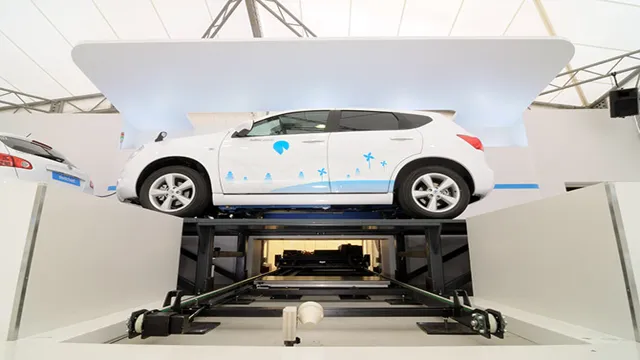
Increased Driving Range
Battery swap technology is a game-changer that provides a lot of benefits for electric vehicles, including increased driving range. This technology allows drivers to swap out a depleted battery for a fully charged one in a matter of minutes. With traditional charging, drivers have to wait for hours until the battery is fully charged, making it a time-consuming and inconvenient experience.
Battery swap technology also eliminates the range anxiety that many electric vehicle owners experience, knowing that their car might run out of power before reaching their destination. Additionally, battery swap technology can lower the overall cost of electric vehicles since battery replacement is cheaper than purchasing a new vehicle. Overall, battery swap technology provides a simpler, faster, and more convenient charging experience, making switching to electric cars a more viable option for many.
Reduced Battery Degradation
Battery swap technology is poised to revolutionize the way cars are powered. One of the biggest benefits of this technology is reduced battery degradation. If you own an electric car, you know that battery degradation is a major concern.
Over time, your battery will lose its ability to hold a charge, which means you’ll need to replace it. This is an expensive process that can cost thousands of dollars. However, with battery swap technology, you don’t have to worry about this.
Instead of owning a battery, you simply swap it out at a charging station. This means that your battery will always be in top condition, which will help to extend its lifespan. And since you won’t have to worry about replacing your battery as often, you’ll save money in the long run.
So, if you want to enjoy the benefits of electric cars without having to deal with battery degradation, then battery swap technology is the way to go.
Existing and Upcoming Battery Swap Programs
Battery swap programs have been gaining popularity among electric car owners who want to enjoy speedy recharging facilities while on the road. One of the most well-known battery swap programs is Tesla’s Battery Swap Facility, which allows Tesla owners to quickly replace their car’s battery with a new one in a matter of minutes. Additionally, battery swapping has also been introduced in China, where battery swapping stations have been set up throughout the city to cater to the growing number of electric vehicles on the road.
Some automakers are also planning to launch their own battery swap programs in the near future to give customers a more flexible and convenient charging option. The concept of battery swapping can be a game-changer for the future of electric cars, as it can reduce range anxiety and make EVs more accessible to a larger audience. With battery swap programs in place, electric vehicle owners can enjoy a hassle-free driving experience without worrying about running out of battery.
Tesla’s Battery Swap Program
Tesla’s battery swap program is a game-changing technology in the electric vehicle industry. Tesla’s battery swap infrastructure allows Model S and Model X owners to exchange their depleted battery packs with fully charged equivalents in just a few minutes. This innovative program is intended to provide faster charging times, making long-range travel more convenient and reducing range-anxiety.
In addition to Tesla, other manufacturers are following suit and introducing battery swap programs for their vehicles. NIO, a Chinese firm, offers a unique battery rental system that allows owners to swap batteries at designated stations, offering flexibility and reducing battery degradation. As more electric vehicle manufacturers continue to innovate and introduce new and improved battery swap programs, it may help drive electric vehicle adoption with greater efficiency and convenience for drivers.
NIO’s Battery Swap Stations in China
NIO’s Battery Swap Stations NIO is a Chinese automobile manufacturer that produces electric vehicles equipped with battery swap technology. They have established over 200 battery swap stations across China to facilitate their customers. NIO’s battery swap stations allow customers to swap their depleted batteries with fully charged ones within 3 minutes.
This eliminates the need to wait for hours at charging stations and provides convenience to the drivers. The battery swap process is automated and monitored by NIO’s backend system that ensures quality and safety. The company ensures that the batteries are fully charged and maintained to ensure an efficient driving experience.
Additionally, NIO is working on the development of more advanced battery swap stations that will be capable of swapping batteries for third-party EV models. This will further increase the reach of NIO’s battery swap program and facilitate a larger market of EV drivers in China.
Better Place’s Failed Attempt at Battery Swap
Battery swap programs are gaining popularity in the electric vehicle market as a solution to longer charging times, and with some previous failed attempts, many are wondering if this option will become mainstream. In 2013, Better Place attempted to create a network of battery swap stations, but ultimately filed for bankruptcy due to high costs and low consumer demand. However, other companies are still pursuing this option, such as Tesla with their upcoming Battery Day, which is rumored to unveil advancements in their battery technology and a potential battery swap program.
Additionally, Chinese EV manufacturer, Nio, already offers battery swap services in their home market, allowing drivers to swap out their battery in under three minutes. While the success of battery swap programs is not guaranteed, it is clear that some companies are still willing to take the risk in pursuit of innovation in the electric vehicle industry.
Challenges to Battery Swap Adoption
Battery swap has been touted as a potential solution to the range anxiety problem among electric vehicle drivers. However, there are some significant challenges to its adoption. One of the main obstacles is the lack of standardization among battery packs.
Each manufacturer has a different design, size, and technology, making it difficult for a universal battery swap system to be implemented. Another challenge is the cost of the infrastructure necessary for the battery swapping process. Setting up stations and maintaining them can be costly, and it’s uncertain whether the investment is worth it in the long run.
There are also concerns about the quality and safety of the batteries used in the swap stations. Battery degradation and uneven charge levels have the potential to reduce the lifespan of the batteries and increase the risk of accidents. Finally, some argue that the advent of fast-charging technology and the increasing range of electric vehicles make battery swap less relevant.
Despite these challenges, battery swap remains a promising technology with the potential to revolutionize the way we drive electric cars.
High Initial Costs
Battery swap technology is slowly gaining momentum, but there are still challenges that need to be addressed before widespread adoption can happen. One of the biggest hurdles is the high initial costs involved in setting up battery swap stations. Companies need to invest in the infrastructure, the equipment, and the technology required to make battery swapping a reality.
This means that the initial cost can be quite high, which puts off many potential investors. Additionally, there is the cost of educating consumers about the benefits and safety of battery swapping, which can be a challenging and time-consuming process. However, with more companies investing in battery swap technology and consumers becoming more aware of the benefits, the high initial costs of battery swapping may eventually become a thing of the past.
As more people adopt this new technology, the costs are likely to come down, making it accessible to even more people. In the end, the benefits of battery swapping are simply too great to ignore, and as technology continues to improve, we can expect to see more and more companies investing in this exciting new field.
Lack of Standardization
One major challenge to the adoption of battery swapping technology is the lack of standardization. Currently, most electric vehicles on the market use different battery sizes, shapes, and connectors, making it difficult for a uniform battery swapping system to be implemented. This lack of standardization not only creates logistical challenges but also increases costs for manufacturers, as they must create multiple types of batteries to accommodate different vehicles.
Additionally, consumers may hesitate to adopt the technology if they are uncertain about its compatibility with their vehicle. Until there is a standardization of battery specifications among manufacturers, the widespread adoption of battery swapping technology may remain elusive.
The Future of Battery Swap for Electric Cars
Battery swap technology has been a hot topic in the electric vehicle industry for years. It aims to solve the problem of limited driving range and long charging times for EVs by allowing drivers to exchange their depleted batteries for fully charged ones at specialized stations. While this concept has been popular in some regions, such as China, it has not gained widespread adoption yet in other places due to several factors, such as the high cost of building and maintaining the swap stations and the lack of standardization for batteries.
However, with the recent advancements in battery technology and the increasing demand for electric vehicles, battery swap systems may become more relevant in the near future. In fact, some companies are already exploring this idea, including Tesla, which reportedly filed a patent for a battery swap system that could be used for its Model S and Model X vehicles. If battery swaps become more efficient and cost-effective, it could potentially change the way we view electric car usage and make EVs more accessible to a wider range of consumers.
Conclusion
When it comes to battery swap electric cars, it’s like changing out your tired old socks for a fresh new pair. You get to hit the road with renewed energy and a sense of accomplishment, knowing that you’re making the most out of your eco-friendly vehicle. So why settle for a drained battery when you could easily swap it out for a fully charged one? Let’s keep the current flowing and swap on!”
FAQs
What is battery swap technology in electric cars?
Battery swap technology allows electric car owners to exchange their depleted battery with a fully charged one at dedicated swapping stations.
How long does it take to swap a battery in an electric car?
Ideally, a battery swap should take no longer than five minutes, but it may take longer depending on the design of the vehicle and the swapping station.
Is battery swapping a viable alternative to charging electric cars?
Battery swapping is a convenient alternative to charging electric cars, particularly for long-distance travel, where charging times may be longer or unavailable.
How does battery swapping impact the lifespan of electric car batteries?
Battery swapping can extend the lifespan of electric car batteries by reducing the stress of repeated charging and discharging cycles. It also allows for faster charging times.

